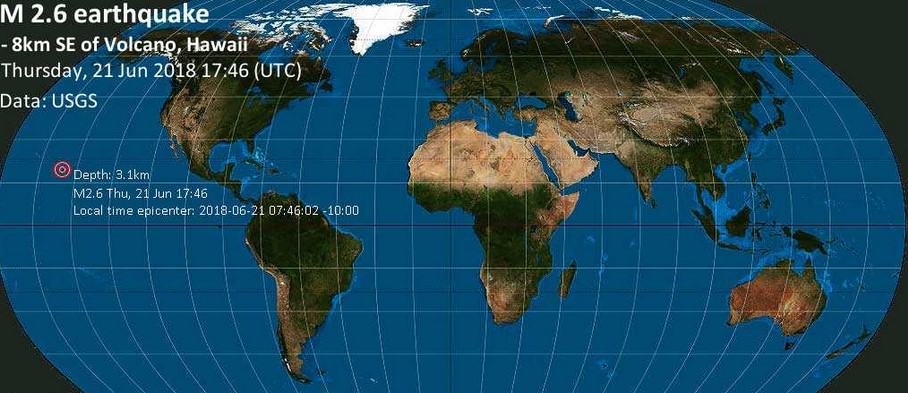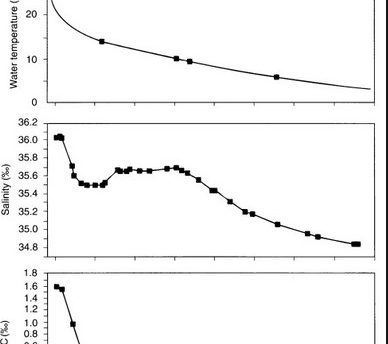
Explosive eruptions can inject large quantities of dust and gaseous material (such as sulphur dioxide) into the upper atmosphere (the stratosphere – see Figure 1.1, section 1.2.2), where sulphur dioxide is rapidly converted into sulphuric acid aerosols. Whereas volcanic pollution of the lower atmosphere is removed within days by the effects of rainfall and gravity, stratospheric pollution may remain there for several years, gradually spreading to cover much of the globe.
The volcanic pollution results in a substantial reduction in the direct solar beam, largely through scattering by the highly reflective sulphuric acid aerosols. This can amount to tens of percent. The reduction, is however, compensated for by an increase in diffuse radiation and by the absorption of outgoing terrestrial radiation (the greenhouse effect). Overall, there is a net reduction of 5 to 10% in energy received at the Earth’s surface.
Clearly, this volcanic pollution affects the energy balance of the atmosphere whilst the dust and aerosols remain in the stratosphere. Observational and modelling studies (e.g. Kelly & Sear, 1984; Sear et al., 1987) of the likely effect of recent volcanic eruptions suggest that an individual eruption may cause a global cooling of up to 0.3C, with the effects lasting 1 to 2 years. Such a cooling event has been observed in the global temperature record in the aftermath of the eruption of Mount Pinatubo in June 1991. The climate forcing associated with individual eruptions is, however, relatively short-lived compared to the time needed to influence the heat storage of the oceans (Henderson-Sellers & Robinson, 1986). The temperature anomaly due to a single volcanic event is thus unlikely to persist or lead, through feedback effects, to significant long-term climatic changes.
Major eruptions have been relatively infrequent this century, so the long-term influence has been slight. The possibility that large eruptions might, during historical and prehistorical times, have occurred with greater frequency, generating long-term cooling, cannot, however, be dismissed. In order to investigate this possibility, long, complete and well-dated records of past volcanic activity are needed. One of the earliest and most comprehensive series is the Dust Veil Index (DVI) of Lamb (1970), which includes eruptions from 1500 to 1900. When combined with series of acidity measurements in ice cores (due to the presence of sulphuric acid aerosols), they can provide valuable indicators of past eruptions. Using these indicators, a statistical association between volcanic activity and global temperatures during the past millennia has been found (Hammer et al., 1980). Episodes of relatively high volcanic activity (1250 to 1500 and 1550 to 1700) occur within the period known as the Little Ice Age, whilst the Medieval Warm Period (1100 to 1250) can be linked with a period of lower activity.
Bryson (1989) has suggested a link between longer time scale volcanic variations and the climate fluctuations of the Holocene (last 10,000 years). However, whilst empirical information about temperature changes and volcanic eruptions remains limited, this, and other suggested associations discussed above, must again remain speculative.
Volcanic activity has the ability to affect global climate on still longer time scales. Over periods of millions or even tens of millions of years, increased volcanic activity can emit enormous volumes of greenhouse gases, with the potential of substantial global warming (Pickering & Owen, 1994; Rampino & Volk, 1988). However, the global cooling effects of sulphur dioxide emissions (Officer & Drake, 1983) will act to counter the greenhouse warming, and the resultant climate changes remain uncertain. Much will depend upon the nature of volcanic activity. Basaltic outpourings release far less sulphur dioxide and ash, proportionally, than do the more explosive (silicic) eruptions.




Leave a Reply